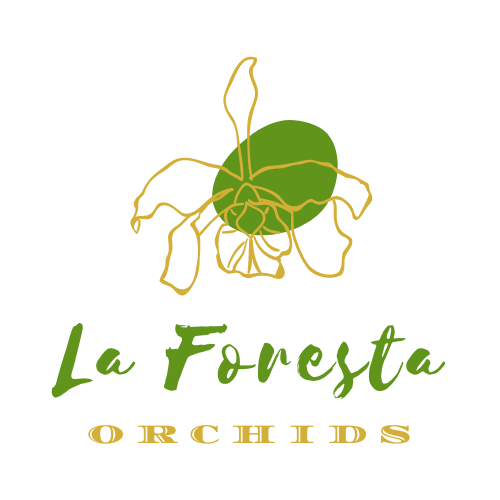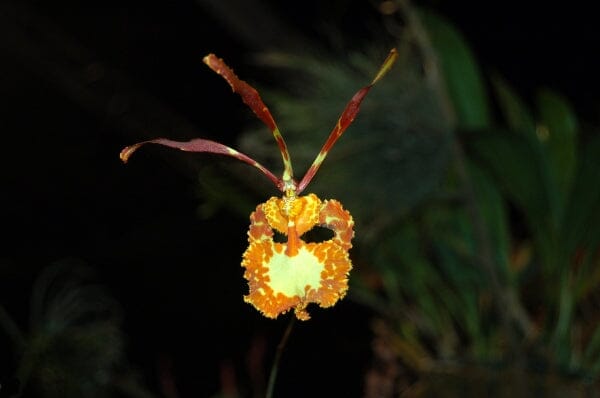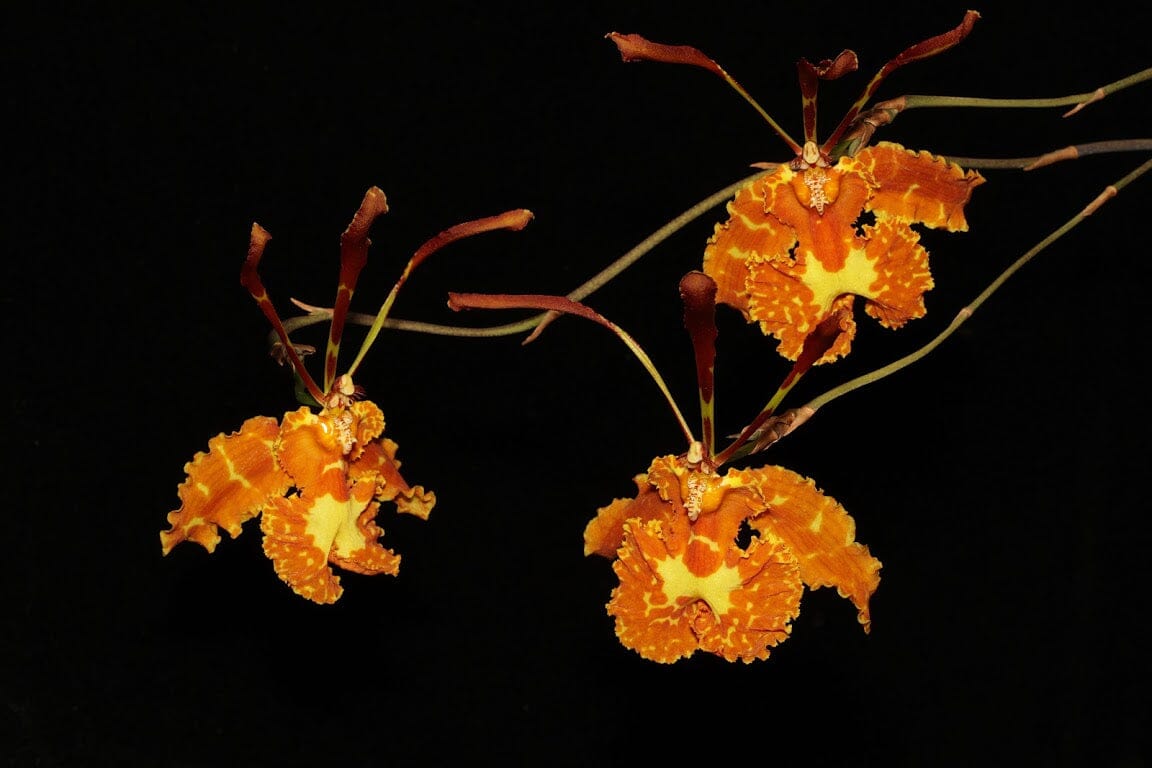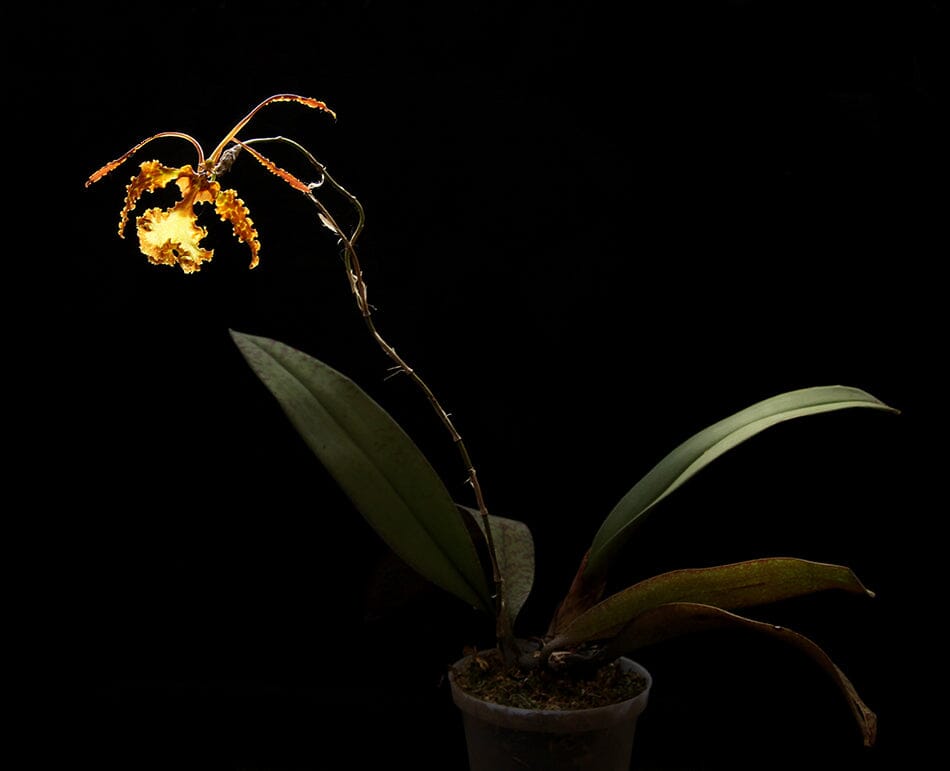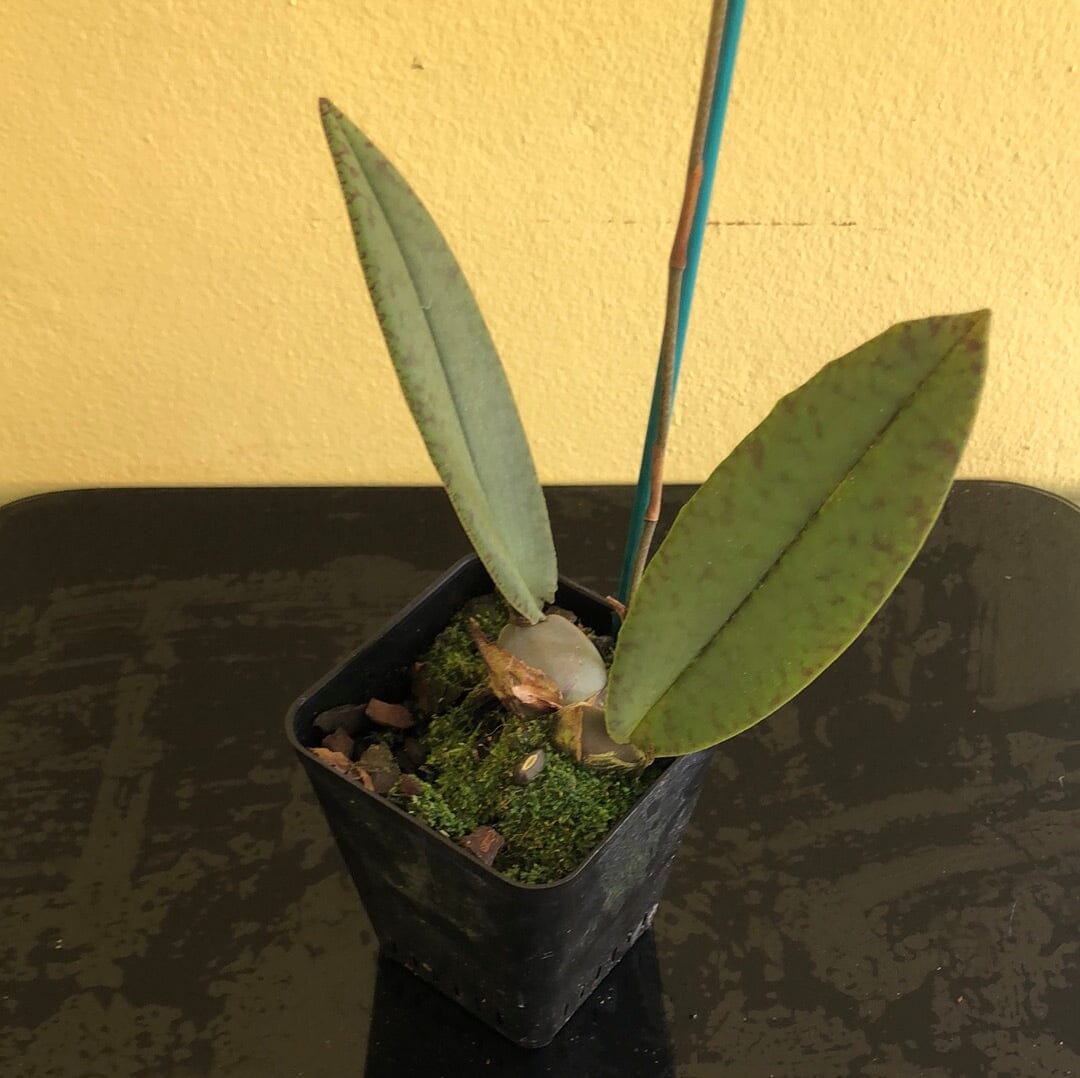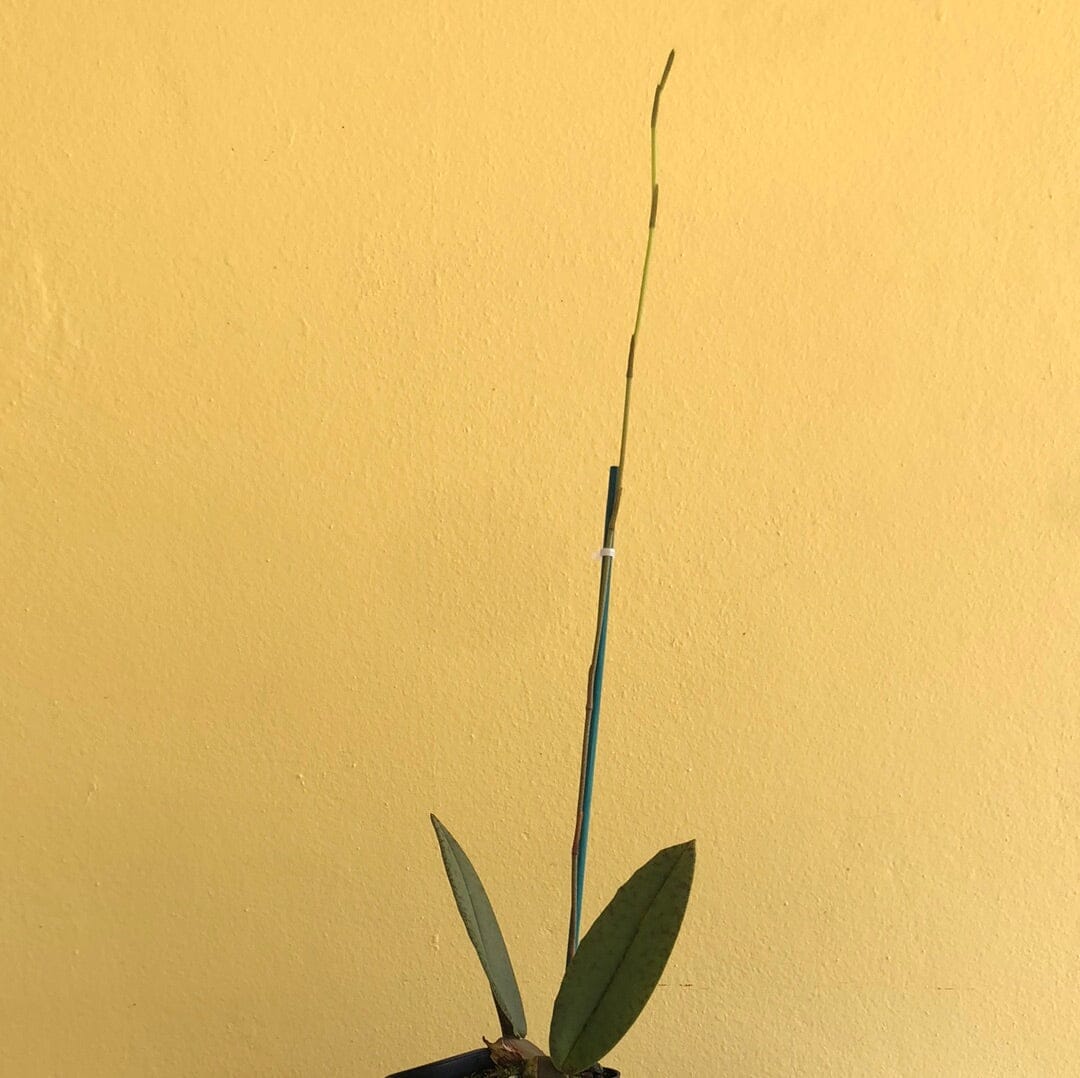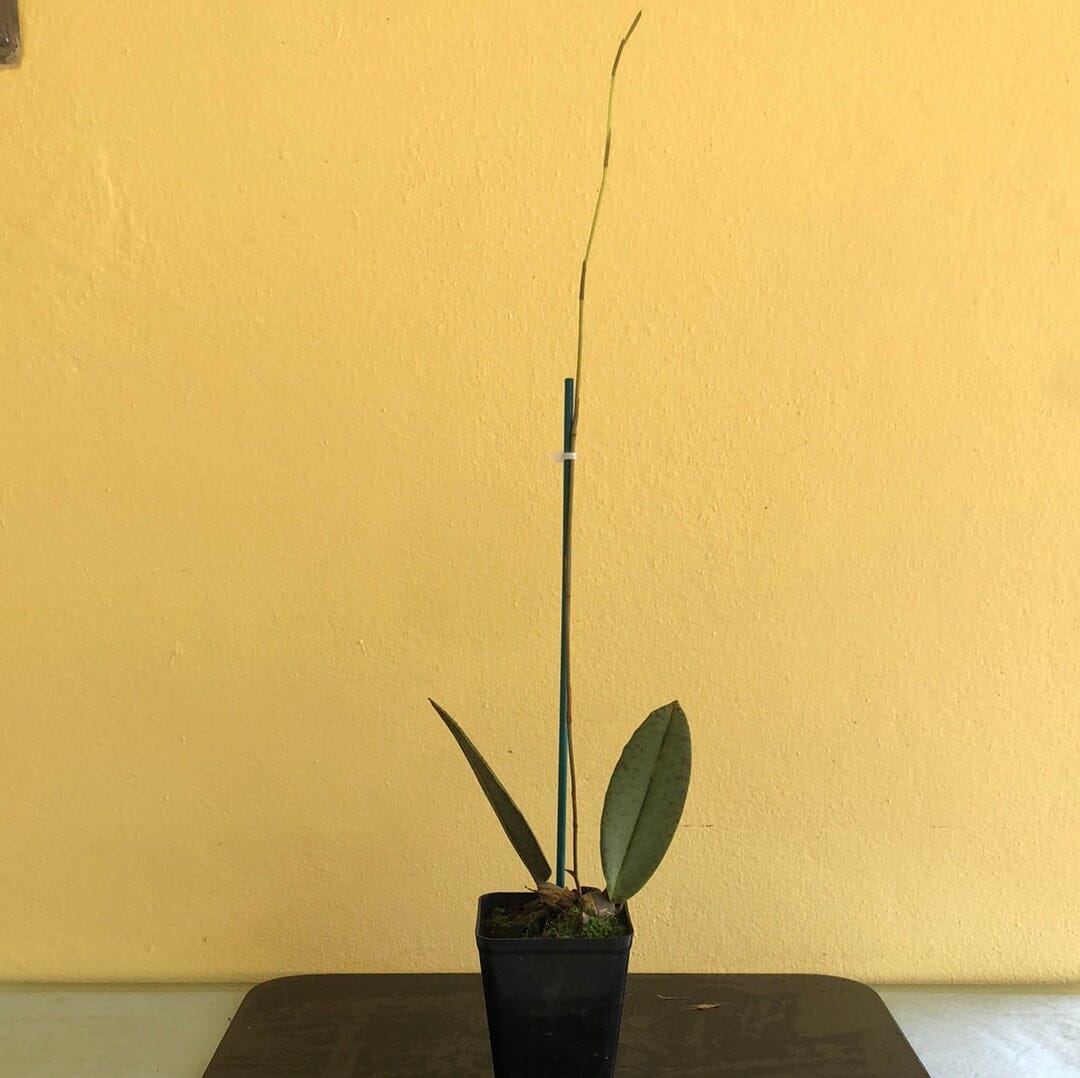La Foresta Orchids
Oncidium Alliance - Psychopsis sanderae
Oncidium Alliance - Psychopsis sanderae
Couldn't load pickup availability
Psychopsis sanderae is native to Peru. These plants were found again in the Junin Department. They grew high on trunks and on large branches of trees in damp mountain forests at elevations most likely around 1220 meters.
It is a small sized, warm to cool growing, caespitose epiphyte, which reaching a height of 15.5-24.5 cm, with ovate or ovate-elliptic, complantae, wrinkled, 3.6-4.6 cm long and 3.0-3.8 cm wide pseudobulbs with a single, apical narrowly oblong-lanceolate, acute, coriaceous leaf with a conduplicate petiolate, 12-20 cm long base.
Light:
Psychopsis sanderae needs a light level of 18000-25000 lux. The plants can tolerate higher levels of light intensity provided that high humidity and intense air movement are ensured.
Temperature:
It is a thermophilic plant. Throughout the year, the average day temperature is 26-28 ° C, and the average night temperature is 14-15 ° C, with a daily amplitude of 11-14 ° C.
Humidity:
Sander's Psychopsis needs the humidity of 75-80% throughout the year.
Substrate, growing media and repotting:
Psychopsis sanderae grow well attached to pieces of tree ferns or cork, as long as we can provide them with high humidity, but during the summer it requires daily watering. In the period of extremely hot and dry weather, attached plants may require even several waterings during the day.
They can also be grow in flat pots or baskets. In this case, they use a substrate quickly draining excess water, which, however, contains substances that retain a certain amount - such as chopped sphagnum moss or perlite. Wood charcoal is also often added to ensure the air permeability of the substrate and to prevent acidification. Usually, relatively small pots are used that only allow the roots to be accommodated.
The plants should be repotted only when it is necessary, and only when new roots appear that allow the plant to return to its normal state in the shortest possible time. Like other species of this genus, these plants should grow well in wire baskets lined with coconut fiber and then filled with a mixture of fine to medium pieces of tree fern fiber with the addition of about 10% perlite and 10% charcoal.
Watering:
Rainfall is abundant throughout the year. The cultivated plants should be watered frequently, but their roots must quickly dry after watering, and the substrate should never be soggy or spread.
Fertilizer:
During the active growth, the plants should be fertilized every week 1/4-1/2 of the recommended dose of fertilizer for orchids. You can use sustainable fertilizer throughout the year. If the plants are grown at latitudes where the light level and temperature are lower, in the absence of active growth, the fertilization should be reduced in order to prevent the accumulation of mineral salts in the substrate.
Rest period:
In winter, the amount of water should be slightly reduced, especially if Psychopsis sanderae are grown under dark, short days, which occurs at moderate latitudes. However, they should not dry up completely, especially for a longer period. If the amount of water supplied decreases, the fertilization should also be reduced until resumption of stronger spring watering.
This is a blooming size in a 3" pot, in spike since 2/2023.






